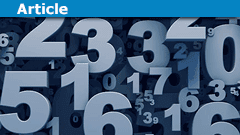Agent Smith
Full Member
- Joined
- Oct 18, 2023
- Messages
- 523
We know that [imath]0.999... = 0.\overline 9 = 1[/imath]
Does that mean ...
[imath]0.\overline 9 \times 10^\infty = 1 \times 10^\infty = 10... = \infty[/imath]
?
I've seen infinite decimal expansions like [imath]\sqrt 2 = 1.414...[/imath] or [imath]2/3 = 0.666...[/imath]
but haven't seen that with natural numbers. Is this, [imath]2013...[/imath] a valid mathematical entity? Isn't [imath]2013... = \infty[/imath]?
Does that mean ...
[imath]0.\overline 9 \times 10^\infty = 1 \times 10^\infty = 10... = \infty[/imath]
?
I've seen infinite decimal expansions like [imath]\sqrt 2 = 1.414...[/imath] or [imath]2/3 = 0.666...[/imath]
but haven't seen that with natural numbers. Is this, [imath]2013...[/imath] a valid mathematical entity? Isn't [imath]2013... = \infty[/imath]?



